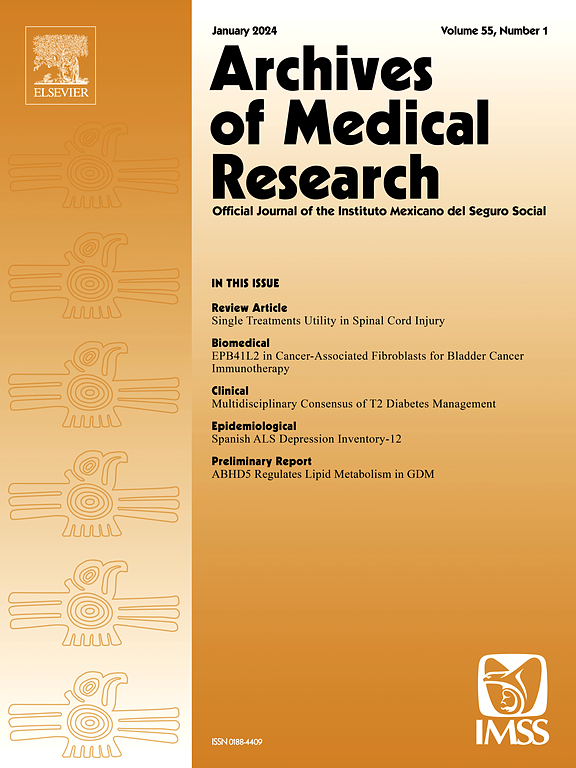Use and Conditions of a Breastfeeding Room in a Tertiary Health Institution: An Exploratory Study
IF 3.4
3区 医学
Q1 MEDICINE, RESEARCH & EXPERIMENTAL
引用次数: 0
Abstract
Background
Creating environments that facilitate breastfeeding (BF) practice in the workplace is an effective way to promote BF. However, few studies have addressed this sensitive and relevant topic in Mexican healthcare institutions.
Objective
Describe the conditions and use of the breastfeeding room (BFR) at a tertiary health institution and identify the perceptions of reproductive-age female workers, and the department heads and human resources staff (DH/HR).
Methods
A cross-sectional study (observational and exploratory) was conducted with 150 female reproductive-age workers and 41 DH/HR staff. They completed self-administered questionnaires, and responded to a semi-structured interview guide designed for the study. Participant observations were conducted in the BFR. Descriptive and inferential analyses were performed, considering statistical significance at p<0.05.
Results
Only 40 of the women of reproductive-age were aware of the existence of the BFR; and only one of the 20 who knew the specific location considered it to have proper conditions for milk extraction and storage. Between 21 and 28% of the participants considered that BF promotion actions were being conducted at the Institute. Although 61% of DH/HR reported knowing the existence of the BFR, the majority (80%) did not know if any female worker had used it.
Conclusions
Most of the Institute’s female workers of reproductive age did not know of the BFR’s existence, seldom used it, and said it lacked optimal conditions. Efforts to improve BFR conditions and functioning, as well as raise breastfeeding awareness at the workplace must be systematically promoted.
三级卫生机构母乳喂养室的使用和条件:一项探索性研究
在工作场所创造有利于母乳喂养(BF)实践的环境是促进BF的有效途径。然而,很少有研究在墨西哥医疗保健机构中解决这一敏感和相关的主题。目的描述某三级卫生机构母乳喂养室(BFR)的条件和使用情况,并确定育龄女工、部门主管和人力资源工作人员(DH/HR)的看法。方法采用横断面研究(观察性和探索性)对150名育龄女工和41名卫生/人力资源工作人员进行调查。他们完成了自我管理的问卷,并回答了为研究设计的半结构化访谈指南。参与者在BFR中进行观察。进行描述性和推断性分析,考虑统计学显著性为p<;0.05。结果育龄妇女中仅有40人知晓BFR的存在;在知道具体地点的20人中,只有一人认为那里有合适的条件提取和储存牛奶。21%至28%的参与者认为该研究所正在开展男友推广活动。尽管61%的卫生保健/人力资源报告知道BFR的存在,但大多数(80%)不知道是否有女工使用过BFR。结论大多数育龄女工不知道BFR的存在,很少使用BFR,并表示BFR缺乏最佳条件。必须系统地促进改善BFR条件和功能以及提高工作场所母乳喂养意识的努力。
本文章由计算机程序翻译,如有差异,请以英文原文为准。
求助全文
约1分钟内获得全文
求助全文
来源期刊

Archives of Medical Research
医学-医学:研究与实验
CiteScore
12.50
自引率
0.00%
发文量
84
审稿时长
28 days
期刊介绍:
Archives of Medical Research serves as a platform for publishing original peer-reviewed medical research, aiming to bridge gaps created by medical specialization. The journal covers three main categories - biomedical, clinical, and epidemiological contributions, along with review articles and preliminary communications. With an international scope, it presents the study of diseases from diverse perspectives, offering the medical community original investigations ranging from molecular biology to clinical epidemiology in a single publication.
 求助内容:
求助内容: 应助结果提醒方式:
应助结果提醒方式:


